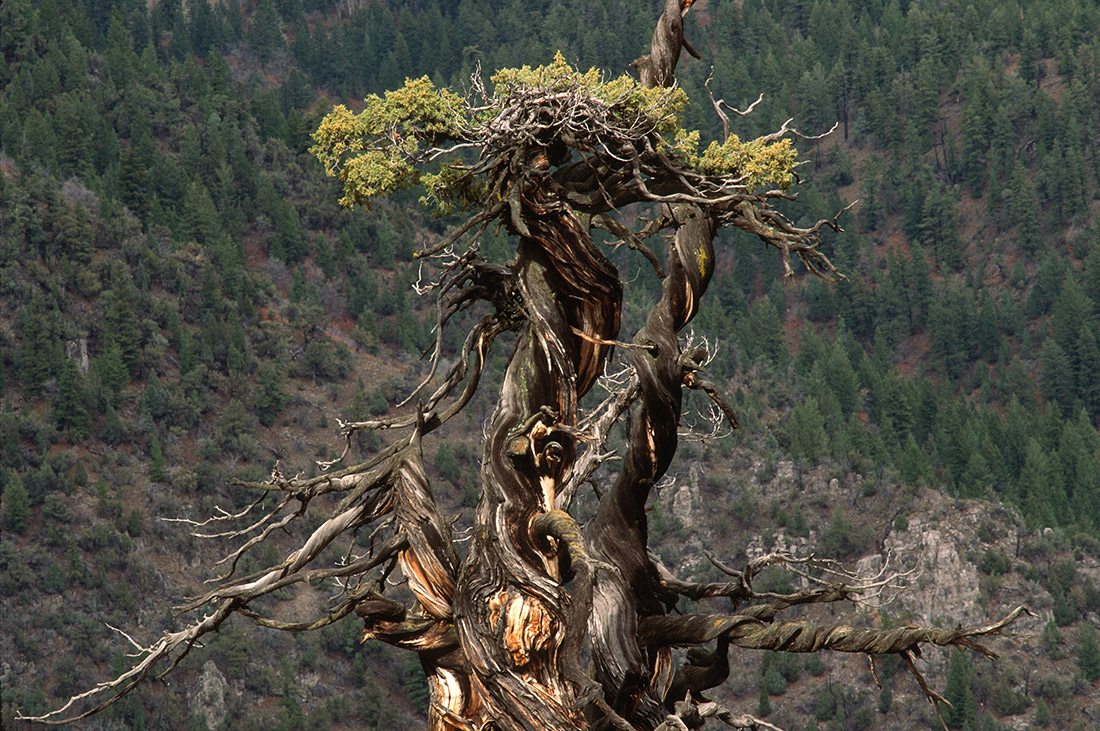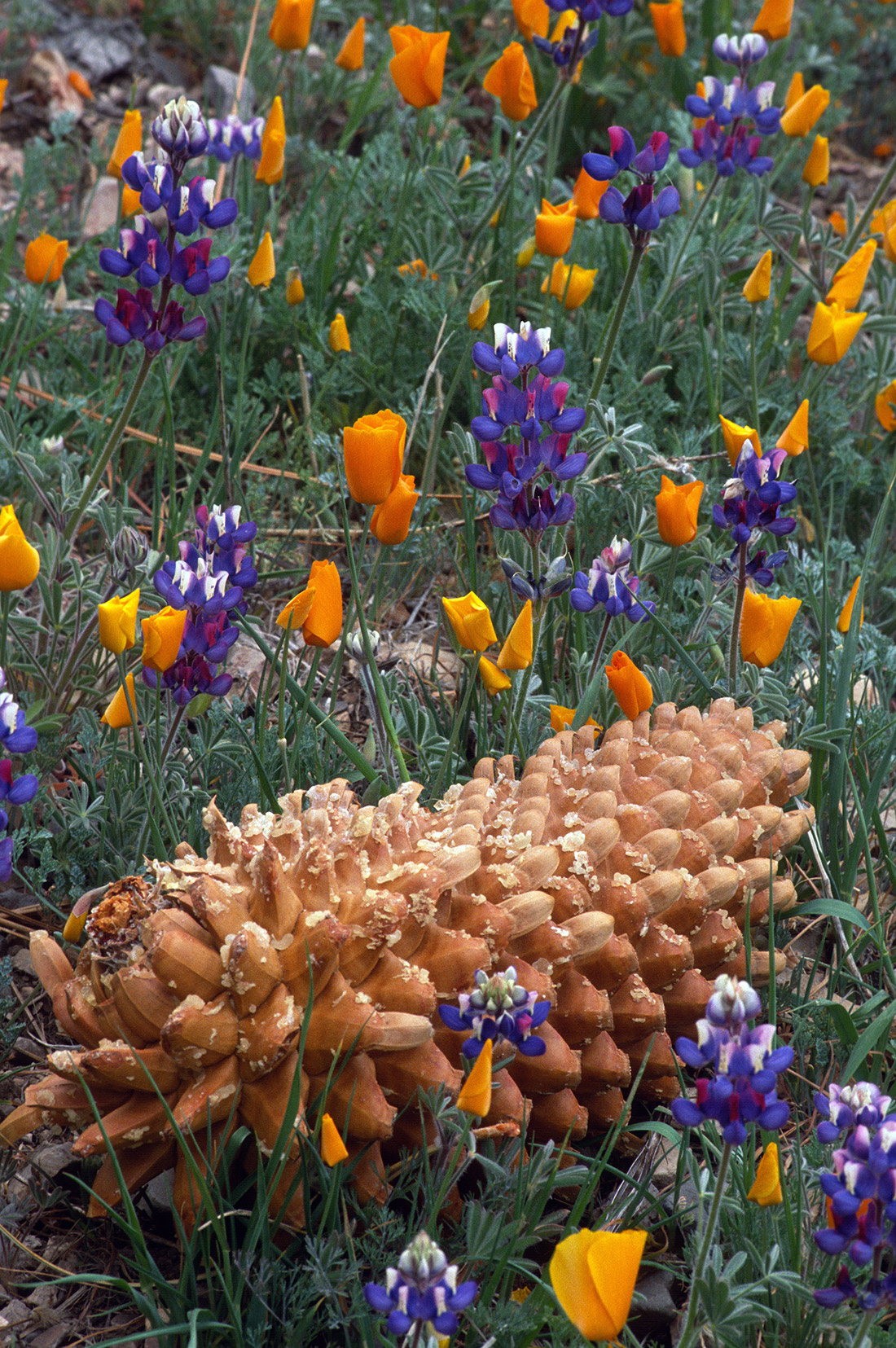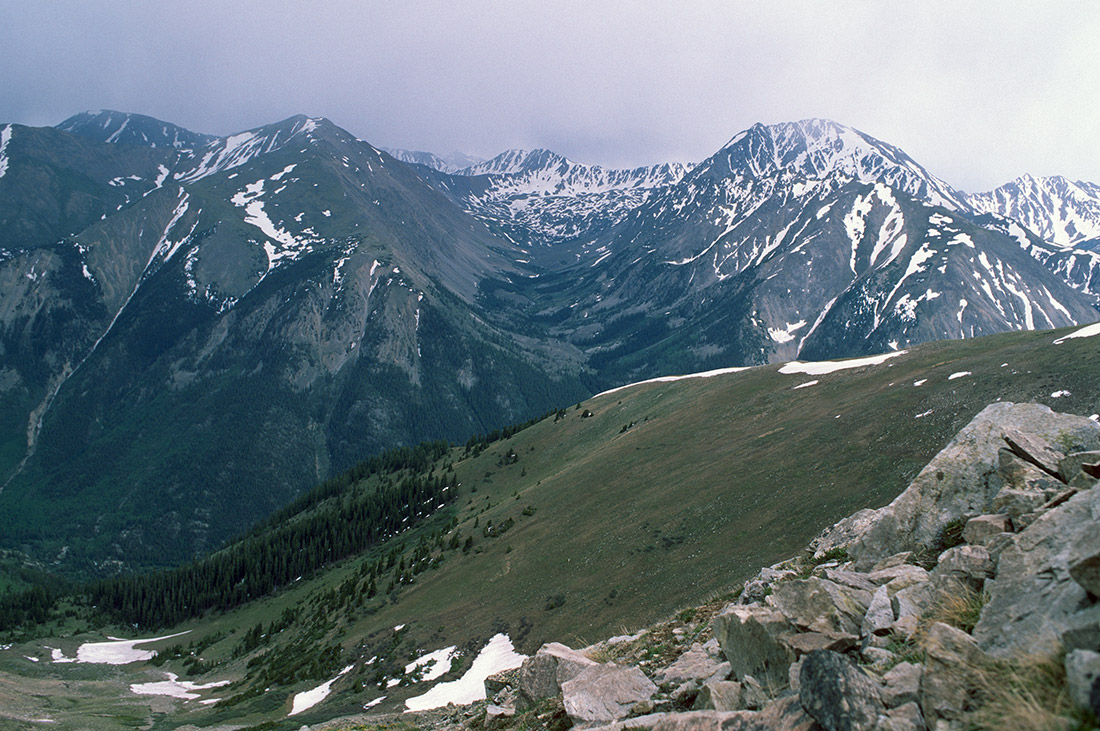By Whit Bronaugh; All photos by Whit Bronaugh

IN AMERICAN FORESTS’ NATIONAL CHAMPION TREE PROGRAM, size isn’t everything: It’s the only thing. By definition, every adult tree, champion or not, is at least 13 feet tall. Even the tallest human has to look up to the smallest tree. It’s no wonder that their size is what strikes us first. But, there are many other superlatives that can be celebrated without using a measuring tape or craning our necks.
THE OLDEST TREE
Our fascination with big trees runs deeper than height, girth and crown spread. Trees grow continuously throughout their lives, so bigger trees are usually older trees. Their longevity demands our respect, awe and humility. While most canopy trees outlive the oldest humans, some trees live to be truly ancient. Peter Brown, Director of Rocky Mountain Tree-Ring Research, has tabulated 15 North American tree species, all conifers, that can live more than 1,000 years. Foxtail pine, coast redwood, Rocky Mountain bristlecone pine and western juniper can live into their 2,000s, and the oldest giant sequoia lived to the exceedingly ripe old age of 3,266. But, there is one tree that far outlasts them all.
The oldest living tree in the world is Methuselah, an intermountain bristlecone pine that sprouted in the White Mountains of California during the Early Bronze Age around 2,833 BCE. This champion survivor was already 1,000 years old before the last woolly mammoth died, before we domesticated horses and before we invented the alphabet. The Ancient One, as it is referred to, turned 2,000 during the Iron Age, 3,000 during the reign of Roman Emperor Marcus Aurelius, and 4,000 during the construction of Notre-Dame in Paris. Methuselah’s 4,851 annual rings, covering 64,870 full moons and more than 1.7 million sunrises, encompass all of written human history. Imagine what Methuselah would say if it could talk.
The cold, dry conditions of the White Mountains severely limit the growth of Methuselah’s rings to a hundredth of an inch or less each year (although, with global warming, it has grown faster in the last 50 years than ever before). Under more favorable conditions, most trees grow much faster, but which one is the champion of speedy growth?
THE FASTEST GROWING TREE

The General Sherman giant sequoia is often touted as the fastest growing tree because each year it adds three-quarters of a ton of wood. But, that’s absolute growth. Whether it’s people or trees, we are most impressed by growth relative to one’s size, usually measured in the upward direction.
According to the Guinness Book of World Records, the fastest upwardly growing tree in America may be the naturalized royal paulownia, a native of China. It can grow as much as 20 feet in its first year under ideal conditions. Its super power, shared with only a handful of the 60,000 tree species in the world, is its use of C4 (instead of C3) carbon fixation. This modification of photosynthesis uses carbon dioxide more efficiently so that the stomata — those little pores on leaves used for gas exchange — can remain closed longer, thus saving water so important to growth.
Among American native trees, the poplars and cottonwoods stand out with a growth potential of up to 8 feet per year, depending on the species and growing conditions. No wonder hybrids of these trees were chosen by tree farmers — they can turn a profit in little more than a decade. The rapid growth of cottonwoods is also evident in the National Register of Champion Trees: the Fremont, eastern, black and plains cottonwood champions are among the 11 largest broadleaf champions in America, even though cottonwoods only live about a century.
THE HARDEST WOOD
Most of the growth of a tree eventually becomes wood that serves as the support structure for the living tissues. The strength of a tree, and the properties of its wood, depend largely upon the wood’s density. To establish a champion of wood density the standard procedure is to compare woods with the Janka hardness test. Place a steel ball, 11.28 millimeters in diameter, onto the wood and press down until half the
ball is embedded (making a circle with an area of 100 square millimeters). The pounds of force (lbf ) required to make the hemispherical indentation in the wood is its Janka hardness value.
The hardest wood in America, and fourth hardest in the world, is found in the rough bark lignum-vitae, a small tropical tree that extends north into the Florida Keys. It has a Janka hardness of 4,500 lbf, about three to four times harder than most oaks. Second place goes to desert ironwood at 3,260 lbf. This Sonoran Desert tree has wood that is likely twice as hard as any wooden floor you’ve walked on.
THE HEAVIEST WOOD
As you might expect, the hardest woods are very heavy, but the correlation is not perfect. Desert ironwood does come in second in the weight category at 75.4 pounds per cubic foot. However, the champion heaviest wood is that of the aptly named leadwood, found in southern and eastern Florida. The biggest one is only 30 feet tall and 2 feet in diameter, but its wood is 84.5 pounds per cubic foot. That’s more than 35 percent heavier than water, so you’ll want to pick a different tree if you need to make a raft.
THE LARGEST LEAF, FLOWER AND FRUIT SIZE
You wouldn’t have much of a tree without a lot of wood holding it up, but you wouldn’t have any wood without leaves to make the food that grows the wood, flowers to reproduce the tree, fruits to disperse the seeds, and bark to protect the living cambium. The champion of leaf size is the coconut palm with fronds up to 18 feet long. Florida royal palm leaves are not far behind, relative to most trees, with 12-foot leaves. The tree with the biggest simple leaf (not divided into leaflets like the compound leaves of palm, hickory or ash) is the bigleaf magnolia with leaves up to 36 inches long and 12 inches wide. Bigleaf magnolia also has the biggest flower of any North American tree or plant, with blossoms a foot in diameter. The biggest tree fruit is the 1-foot diameter, look-out-below coconut, although the slender fruit pods of the northern catalpa can be twice as long. Among conifers, sugar pines have the longest cones (up to 23 inches), and Coulter pines have the heaviest (more than 8 pounds), while giant sequoias have the thickest bark (up to 2 feet).
THE NORTHERNMOST TREE
Trees can generally grow as far east, west or south as the continent extends but in the north there is a limit that few trees can reach, and none surpass. Winter cold, however, is not the problem. More than a handful of tree species thrive in the region of Snag, Yukon Territory, Canada, which holds the lowest recorded temperature in North America at -80°F. Trees endure such bitter cold with special chemicals that cause water to freeze into a glass-like solid (a process called vitrification, if you want to sound impressive). This prevents the formation of deadly ice crystals that can puncture cell walls.
Instead, the northern limit of tree growth is largely determined by summer cold that restricts photosynthesis and growth to less than 10 weeks. Beyond the northern treeline, all available energy has to be put into leaves, which make the food, and roots, which store the food. There’s little left over to make wood to support a taller plant, so the “trees” are restricted to the stature of shrubs. Treeline in North America reaches its most northern point on the Tuktoyaktuk Peninsula in the extreme northwestern corner of the Northwest Territories, but isolated clumps of small trees may be found at a similar latitude north of the Brooks Range in Alaska. About a dozen tree species are found in these areas although the only ones to reach tree size are tamarack, white and black spruce, balsam poplar, quaking aspen and Alaska paper birch.
Which of these is the champion northernmost tree? Tree-sized white spruce have been found within a few miles of the Beaufort Sea in northern Yukon Territory. But according to the renowned Arctic ecologist, E. C. Pielou, balsam poplar is the most northern tree. If so, it wouldn’t look like much next to the 421-point champion in Sequim, Wash., but it would be a champion survivor out on the northern edge of what is possible for trees. Whichever is the true northernmost champion, its reign won’t be for long as global warming pushes treeline northward. If you don’t require the champion northernmost tree to actually be tree-sized, then the crown goes to feltleaf willow. The biggest specimen, in Thompson Pass, Mich., is only 91 points, but, as a shrub, its range extends to the north side of Banks Island, some 530 miles north of the Arctic Circle.
Of course, the growing season problem of northern treeline is mirrored in the high elevations of mountains. Since treeline is higher at lower latitudes, the highest growing trees in the U.S. are found in Colorado and the southern Sierra Nevada of California. The champion is out there, blasted into a twisted, stunted form, just 12,000 feet above sea level. It could be an Engelmann spruce, subalpine fir or Rocky Mountain bristlecone pine in Colorado, or a foxtail, whitebark or limber pine in the Sierra Nevada. The challenge to find it is yours.
THE TREE COVERING THE LARGEST GEOGRAPHICAL AREA

An individual tree’s success may be measured by its size, age or number of offspring. But, the success of a tree’s species is measured by its population size and geographic distribution. The champion American tree for geographic area, and possibly number of individuals, is the quaking aspen. It ranges from Alaska to Newfoundland, Canada, covering 110 degrees of longitude (nine time zones), and from north of the Arctic Circle to central Mexico, some 49 degrees of latitude. That’s more than half the distance between the equator and the north pole.
Quaking aspen not only covers more of the globe than any other North American tree, it also represents a challenge to the crowns of both General Sherman and Methuselah. Perhaps you’ve heard of Pando (meaning ‘I spread out’), also called the Trembling Giant. This individual, but clonal, quaking aspen, composed of about 40,000 genetically identical trunks all connected by a vast root system, grows near Fish Lake in Utah and covers 106 acres. At an estimated 6,600 tons, it is nearly five times heavier, and bigger in volume, than General Sherman. And, its root system may be 80,000 years old, making it 16 times older than Methuselah! If that age is correct, Pando began its life right around the time our Homo sapiens ancestors first left Africa, when we still shared the planet with other human species.
* * *
There are many other superlatives of trees one could consider to recognize additional champions. Which is the most huggable? The most beautiful? The most inspirational? The most loved?
A matter of opinion, you say? Exactly.
So, get out there, whether into the back of beyond or your own backyard, and based on the superlative of trees that inspires you the most, find and crown your own champion tree.
Whit Bronaugh is a nature enthusiast, author, photographer, scientist and educator. He recently completed his first novel, “The Amazon Triangle.”

